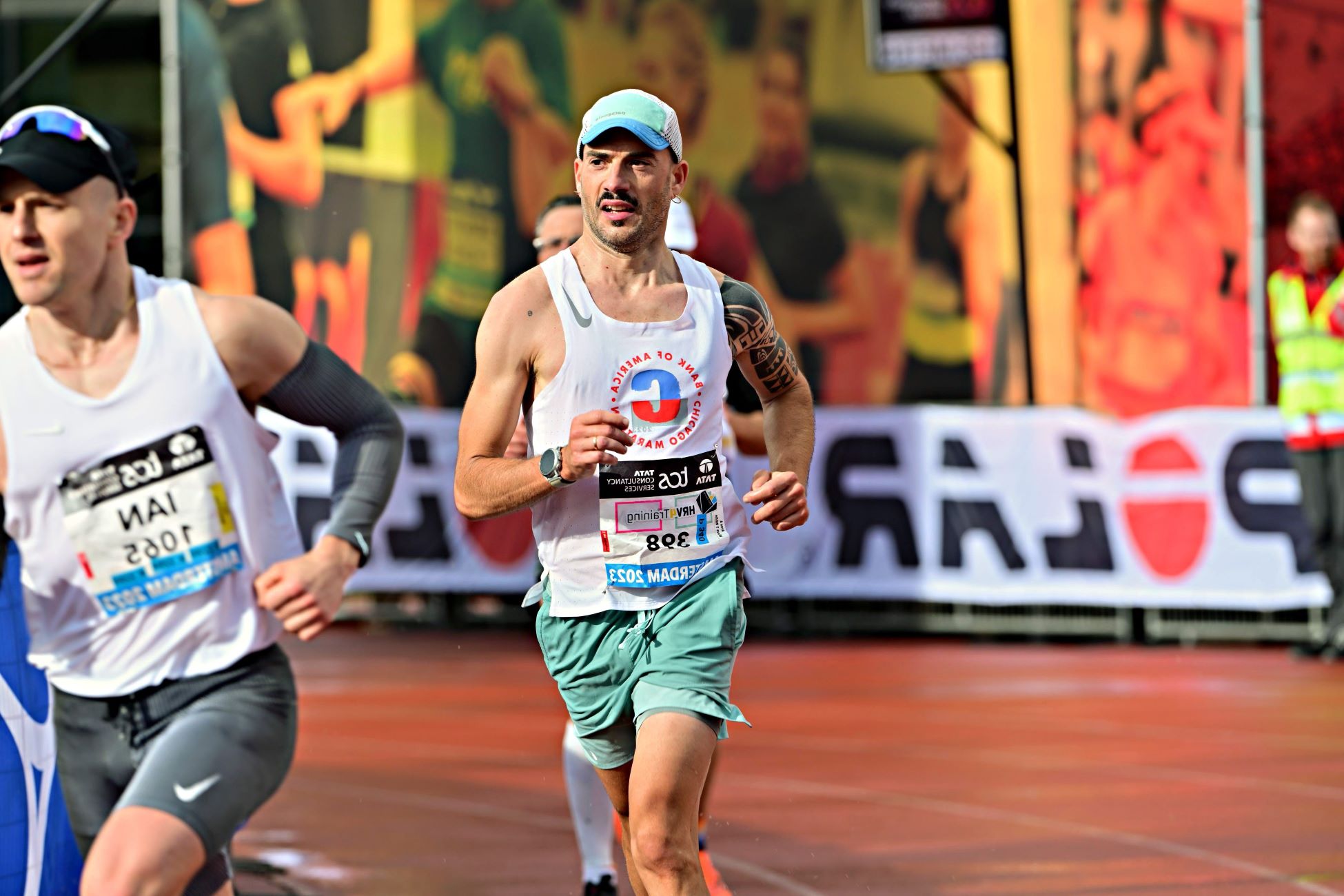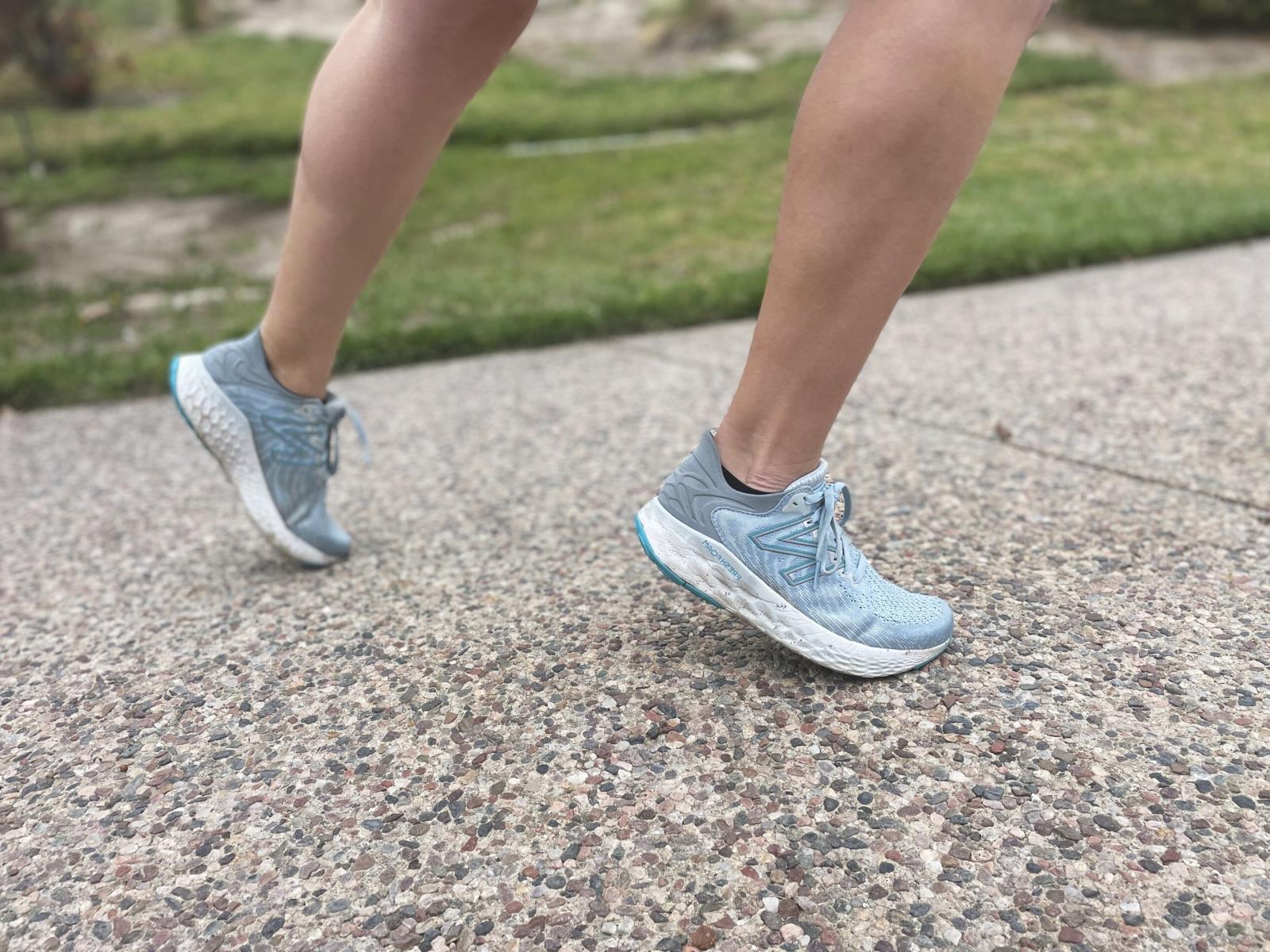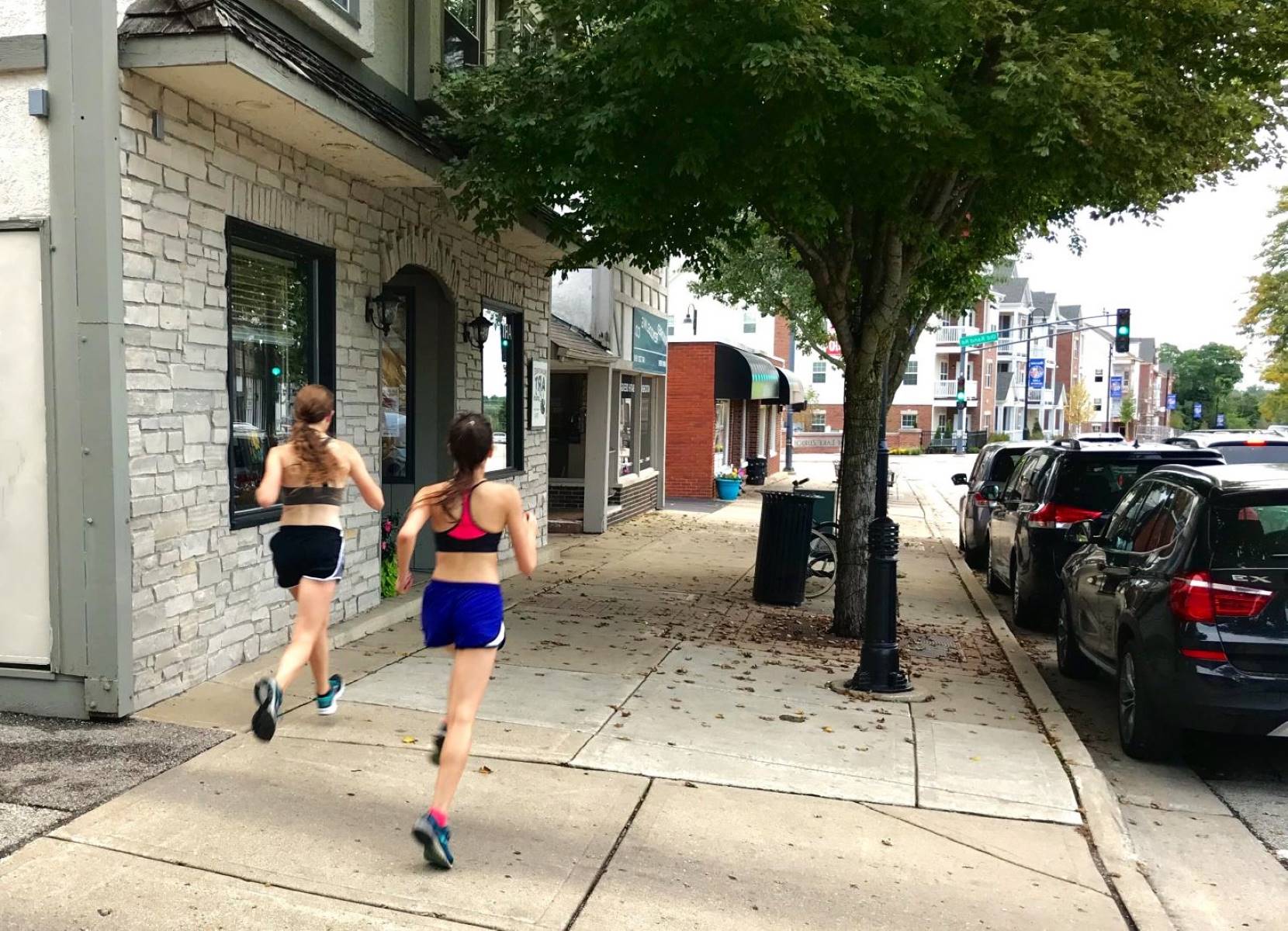Home>Health & Nutrition>Understanding The Sudden Increase In Heart Rate During Running


Health & Nutrition
Understanding The Sudden Increase In Heart Rate During Running
Published: February 20, 2024
Discover the reasons behind a sudden increase in heart rate during running and how it impacts your health and nutrition. Learn how to manage and optimize your cardiovascular performance.
(Many of the links in this article redirect to a specific reviewed product. Your purchase of these products through affiliate links helps to generate commission for Therunningadvisor.com, at no extra cost. Learn more)
Table of Contents
The Role of Adrenaline in Heart Rate Increase
Adrenaline, also known as epinephrine, is a powerful hormone and neurotransmitter that plays a pivotal role in the sudden increase in heart rate during running. When you engage in physical activity, especially vigorous exercise like running, your body's demand for oxygen and energy escalates. In response to this heightened demand, the adrenal glands release adrenaline into the bloodstream.
Adrenaline acts as a catalyst, swiftly preparing the body for action. It triggers a series of physiological responses, including the dilation of blood vessels to enhance blood flow to the muscles, an increase in the rate and depth of breathing to boost oxygen supply, and the release of glucose from the liver to provide an immediate energy source for the muscles.
One of the most notable effects of adrenaline is its impact on the heart. As this hormone surges through the body, it binds to specific receptors on the heart muscle, prompting it to beat faster and more forcefully. This surge in heart rate, known as tachycardia, is a fundamental component of the body's acute stress response, often referred to as the "fight or flight" response.
During running, the release of adrenaline serves as a vital mechanism to optimize cardiovascular function and ensure that the muscles receive an adequate supply of oxygen and nutrients to sustain the increased physical exertion. This heightened heart rate, facilitated by adrenaline, enables the body to meet the elevated metabolic demands imposed by running.
In essence, the role of adrenaline in heart rate increase during running is a finely orchestrated physiological response designed to support the body's need for enhanced cardiovascular output and energy delivery to the working muscles. Understanding the intricate interplay between adrenaline release and heart rate elevation sheds light on the remarkable adaptability of the human body in meeting the demands of strenuous physical activity.
Factors Contributing to Sudden Heart Rate Spikes
The sudden spikes in heart rate experienced during running can be attributed to a myriad of factors, each playing a distinct role in orchestrating the body's physiological response to the demands of physical exertion. Understanding these contributing factors is essential for comprehending the intricacies of heart rate regulation during exercise.
-
Physical Exertion: The primary catalyst for sudden heart rate spikes during running is the increased physical exertion. As the body transitions from a state of rest to vigorous activity, the demand for oxygen and energy escalates, prompting the heart to pump blood at a faster rate to deliver oxygen and nutrients to the working muscles.
-
Environmental Conditions: Environmental factors such as temperature, humidity, and altitude can significantly impact heart rate during running. In hot and humid conditions, the body expends additional energy to regulate its temperature, leading to an elevation in heart rate. Similarly, running at higher altitudes where oxygen levels are lower necessitates a higher heart rate to compensate for the reduced oxygen availability.
-
Emotional and Psychological State: Emotional and psychological factors can exert a profound influence on heart rate. Feelings of anxiety, stress, or excitement can trigger the release of adrenaline, leading to an abrupt increase in heart rate. Additionally, the anticipation of physical exertion or competition can elevate heart rate even before the onset of running.
-
Hydration and Electrolyte Balance: Dehydration and imbalances in electrolytes, such as sodium, potassium, and magnesium, can disrupt the body's ability to maintain optimal cardiovascular function. Inadequate hydration and electrolyte levels can lead to an accelerated heart rate and compromise exercise performance.
-
Individual Fitness Level: The fitness level of an individual plays a pivotal role in determining heart rate response during running. Individuals who are less physically fit may experience more pronounced increases in heart rate during exercise compared to those who are well-conditioned. As fitness improves, the heart becomes more efficient at pumping blood, resulting in a lower resting heart rate and a more controlled heart rate response during physical activity.
-
Medication and Stimulants: Certain medications, such as decongestants, bronchodilators, and stimulants, can elevate heart rate. It is essential to be mindful of the potential effects of medications on heart rate when engaging in running or other forms of exercise.
By recognizing and understanding these contributing factors, individuals can gain valuable insights into the dynamic interplay of physiological, environmental, and psychological elements that influence heart rate spikes during running. This awareness empowers individuals to make informed decisions regarding their exercise regimen, optimize performance, and prioritize their overall well-being.
Understanding the Impact of Intensity and Duration of Running
The impact of intensity and duration of running on the body's physiological responses is profound and multifaceted. Intensity refers to the level of exertion during running, while duration encompasses the length of time the activity is sustained. Both factors play a pivotal role in shaping the body's cardiovascular and metabolic adaptations, influencing heart rate dynamics during running.
Intensity:
The intensity of running directly influences heart rate, with higher intensities eliciting more pronounced increases in heart rate. When engaging in high-intensity running, the body's demand for oxygen and energy surges, compelling the heart to pump blood at a faster rate to meet the heightened metabolic requirements. This heightened heart rate response is essential for delivering oxygen and nutrients to the working muscles, facilitating energy production, and supporting the body's overall performance during intense running sessions.
Duration:
The duration of running also exerts a significant impact on heart rate patterns. Prolonged running sessions can lead to a gradual increase in heart rate as the body adapts to sustained physical exertion. As the duration of running extends, the heart rate may exhibit fluctuations, influenced by factors such as fatigue, hydration status, and environmental conditions. Additionally, prolonged running can induce a phenomenon known as steady-state heart rate, where the heart rate stabilizes to meet the sustained demands of aerobic activity.
Interplay of Intensity and Duration:
The interplay between intensity and duration further shapes heart rate dynamics during running. High-intensity, short-duration sprints may trigger rapid and substantial increases in heart rate, reflecting the acute demands of anaerobic energy production. In contrast, moderate-intensity, long-duration runs may lead to a gradual and sustained elevation in heart rate, reflecting the body's adaptation to prolonged aerobic activity.
Understanding the impact of intensity and duration of running on heart rate provides valuable insights for optimizing training regimens, tailoring exercise prescriptions, and monitoring cardiovascular responses. By strategically manipulating the intensity and duration of running, individuals can effectively modulate heart rate patterns to achieve specific training objectives, enhance cardiovascular fitness, and promote overall health and well-being.
The intricate relationship between intensity, duration, and heart rate underscores the dynamic nature of the body's physiological responses to running, highlighting the adaptability and resilience of the cardiovascular system in meeting the diverse demands imposed by varying exercise intensities and durations.
The Importance of Proper Warm-Up and Cool-Down
Engaging in a proper warm-up and cool-down regimen is paramount for optimizing performance, preventing injuries, and promoting overall well-being during running and other forms of physical activity. These preparatory and restorative practices play a pivotal role in priming the body for exercise and facilitating recovery post-activity. Understanding the significance of incorporating a structured warm-up and cool-down routine can profoundly impact an individual's running experience and long-term physical health.
Warm-Up: Preparing the Body for Action
A well-executed warm-up serves as a crucial prelude to running, serving multiple physiological and psychological purposes. Primarily, a warm-up gradually elevates the heart rate and increases blood flow to the muscles, effectively preparing the cardiovascular system for the impending demands of exercise. This gradual elevation in heart rate allows the body to transition from a state of rest to vigorous activity, minimizing the risk of abrupt heart rate spikes and enhancing the efficiency of cardiovascular function during running.
Furthermore, a warm-up initiates the gradual release of synovial fluid within the joints, enhancing joint lubrication and flexibility. This preparatory phase also stimulates the activation of key muscle groups, optimizing their responsiveness and reducing the likelihood of muscular strain or injury during running. Psychologically, a warm-up fosters mental readiness, allowing individuals to focus their attention, establish a positive mindset, and mentally prepare for the physical challenges ahead.
Cool-Down: Facilitating Recovery and Adaptation
Equally essential is the incorporation of a comprehensive cool-down routine following running. A cool-down period allows the body to gradually transition from the heightened physiological state induced by exercise to a state of rest and recovery. During cool-down, the heart rate gradually decreases, aiding in the redistribution of blood flow and the removal of metabolic by-products from the muscles. This gradual reduction in heart rate helps prevent post-exercise hypotension and dizziness, promoting a smooth transition to a resting state.
Moreover, a cool-down supports the dissipation of accumulated heat within the body, facilitating the regulation of core body temperature. This phase also provides an opportunity for gentle stretching and flexibility exercises, promoting muscle relaxation and preventing the onset of post-exercise muscle stiffness. By engaging in a cool-down routine, individuals can expedite the recovery process, minimize post-exercise discomfort, and enhance the body's adaptive responses to the physiological stressors induced by running.
Holistic Benefits and Long-Term Implications
The holistic benefits of incorporating proper warm-up and cool-down practices extend beyond immediate performance optimization and injury prevention. Consistent adherence to these preparatory and restorative routines can contribute to the long-term maintenance of musculoskeletal health, joint mobility, and cardiovascular function. Additionally, these practices foster a sense of mindfulness and self-care, encouraging individuals to prioritize their physical well-being and cultivate sustainable exercise habits.
In essence, the importance of proper warm-up and cool-down transcends mere procedural formalities; it embodies a fundamental commitment to nurturing the body's resilience, optimizing physical performance, and safeguarding against the potential risks associated with running. By embracing the intrinsic value of these preparatory and restorative rituals, individuals can embark on their running endeavors with confidence, mindfulness, and a profound appreciation for the profound impact of holistic self-care on their overall health and well-being.
Recognizing the Signs of Overexertion and When to Seek Medical Attention
Recognizing the signs of overexertion during running is crucial for safeguarding one's well-being and preventing potential health complications. While physical exertion is an integral aspect of exercise, pushing the body beyond its limits can lead to overexertion, which may manifest through various physiological and perceptible indicators. Understanding these signs empowers individuals to make informed decisions regarding their exercise intensity and seek appropriate medical attention when necessary.
Signs of Overexertion:
-
Elevated Heart Rate: An excessively high and sustained heart rate during running, especially beyond the expected range for a given intensity, may indicate overexertion. Monitoring heart rate through wearable fitness devices or manual palpation can provide valuable insights into cardiovascular strain.
-
Excessive Fatigue: Persistent and overwhelming fatigue that impedes running performance and fails to subside with adequate rest may signify overexertion. Feeling excessively drained and lacking the usual energy reserves warrants attention.
-
Dizziness and Lightheadedness: Feeling lightheaded, dizzy, or experiencing vertigo during or after running can be indicative of cardiovascular stress and inadequate oxygen delivery to the brain, potentially stemming from overexertion.
-
Shortness of Breath: Uncharacteristic breathlessness or labored breathing that persists despite moderate exertion may signal overexertion and compromised respiratory function.
-
Muscle Weakness and Discomfort: Pronounced muscle weakness, soreness, or discomfort that exceeds the typical post-exercise sensations may point to muscular overexertion and potential strain.
-
Impaired Cognitive Function: Cognitive impairment, such as confusion, disorientation, or difficulty concentrating during or after running, may indicate inadequate cerebral perfusion and heightened physiological stress.
When to Seek Medical Attention:
-
Persistent Symptoms: If the aforementioned signs persist or worsen despite adequate rest and recovery, seeking medical evaluation is imperative to assess the underlying causes and mitigate potential health risks.
-
Unexplained Symptoms: Experiencing unexplained and concerning symptoms during or after running, such as chest pain, palpitations, or severe shortness of breath, necessitates prompt medical attention to rule out serious cardiovascular or respiratory issues.
-
Sudden Onset of Symptoms: The sudden onset of severe symptoms, such as fainting, extreme weakness, or loss of consciousness during running, warrants immediate medical intervention to address potential medical emergencies.
-
History of Cardiovascular Conditions: Individuals with a history of cardiovascular conditions or risk factors should be vigilant for signs of overexertion and promptly consult a healthcare professional if any concerning symptoms arise during running.
By vigilantly recognizing the signs of overexertion and understanding when to seek medical attention, individuals can prioritize their health and well-being while engaging in running and other forms of physical activity. This proactive approach not only fosters a safe and sustainable exercise experience but also underscores the importance of self-awareness and responsible exercise practices in promoting long-term health and vitality.














